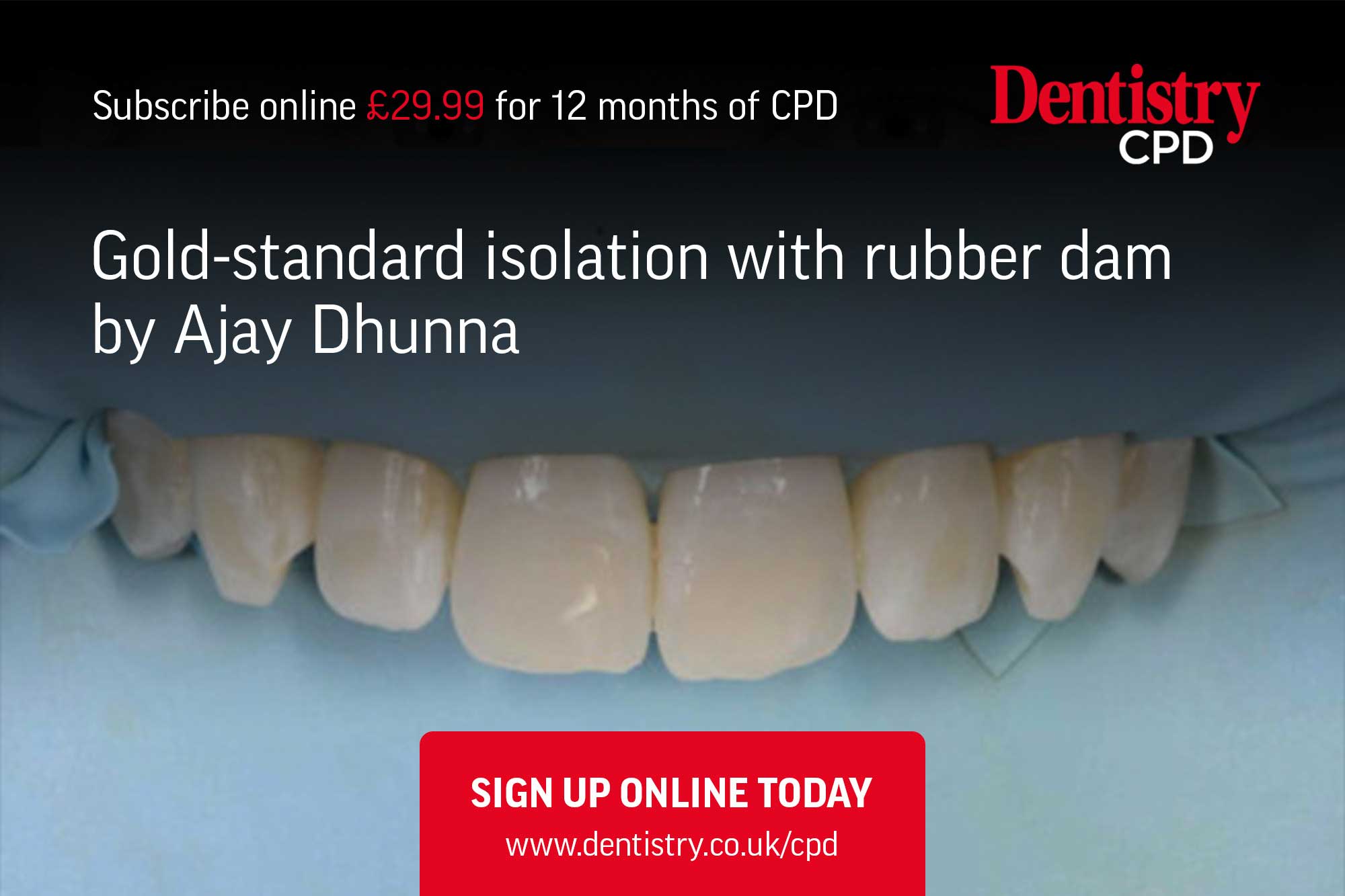 Ajay Dhunna presents a guide to achieving effective isolation with rubber dam.
Ajay Dhunna presents a guide to achieving effective isolation with rubber dam.
Rubber dam isolation is a phrase which invokes many emotions in the dental surgery:
- Dentist: ‘This is going to make my life so much easier and make my photos looks so great’
- Nurse: ‘Oh great here we go again… 30mins to put it on for a five-minute filling’
- Patient: ‘What is he doing with this piece of rubber near my face?!’
The reality for the majority of dental practices is that rubber dam is not used routinely. The main reason for this is because of this very problem… it is not used routinely. Dentists are not efficient at placing rubber dam meaning nurses get fed up of essentially ‘wasted time’ and the patient loses faith in the extensive time it takes to place the dam before treatment has even started.
In actual fact, rubber dam isolation for routine dental work (which for the sake of this short CPD session will be classed as quadrant dentistry) should take less than five minutes to place accurately and efficiently. This session will hopefully help to make that a reality, however the main reality will come from you yourself practicing and placing rubber dam as often as possible. That is your homework from this CPD session!
Why isolate?
Rubber dam is so important for dentists to get used to using because modern day dentistry is adhesive dentistry. Adhesive dentistry relies on clean and dry substrates in order to have the best results. We all have colleagues that say their isolation is fine with cotton wool rolls, but what about those times when you are restoring a lower 7 and are in a constant battle with the patient’s tongue and then the patient decides to take a swallow and your perfectly etched cavity prep has a saliva shower. Rubber dam isolation is the predictable and repeatable way to achieve total isolation in an efficient and comfortable way.
Below are just some of the reason why every dentist should learn to isolate:
- When you get efficient after a couple of times practicing, it actually saves you time as you are not wasting time battling the patient’s tongue or having to re-etch and re-bond
- Longevity of restorations – as stated, modern dentistry relies on clean dry substrates. Therefore, by isolating teeth effectively you are giving a great canvas of which to bond to
- Patient comfort – once the patient is numbed up, rubber dam isolation is actually preferred by patients because it prevents water building up at the back of the mouth. The patient can also rest on the tautness of the dam helping them stay open easier
- Controlled environment
- Gives you more space to work – as you are preventing the tongue and cheek getting in the way
- The whole procedure is a lot more relaxed and will aid the flow of the appointment if everything is controlled
- It aids your photography as it gives a neutral background to photos, making comparisons easier.
To read more and gain CPD for this article, simply visit www.dentistry.co.uk/cpd.


